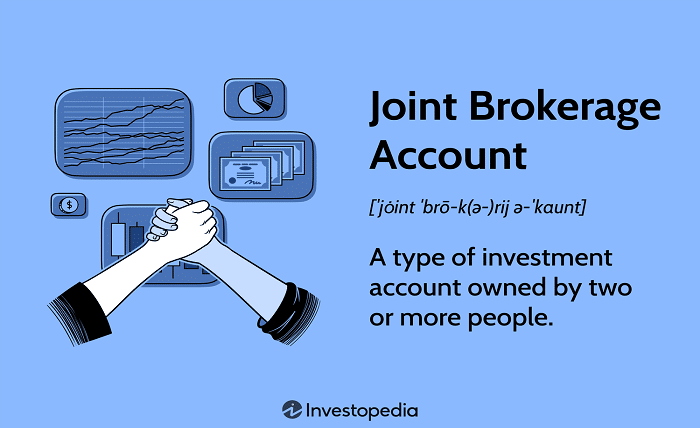Investment Accounts: A Complete Guide to Building Wealth

An investment account is a financial tool that allows individuals to grow their wealth by investing in assets like stocks, bonds, mutual funds, and ETFs. Unlike a savings account, an investment account offers higher growth potential over the long term. Whether your goal is retirement, funding education, or achieving financial independence, an investment account is essential for anyone seeking to maximize returns and build lasting wealth.
By choosing the right type of investment account, you can align your financial goals with a diversified portfolio, making it a cornerstone of any robust financial plan.
Types of Investment Accounts: Choosing the Right One for Your Goals
Investment accounts come in several forms, each tailored to specific financial objectives. Here are the main types:
- Brokerage Accounts: These accounts offer flexibility, allowing you to invest in various assets. However, gains are taxed annually.
- Retirement Accounts: Options like 401(k)s and IRAs provide tax advantages designed to grow your retirement savings.
- Education Savings Accounts: Accounts such as 529 plans are tax-advantaged and ideal for saving for education.
- Robo-Advisor Accounts: Automated investment accounts for those who prefer minimal management effort.
Understanding these types of investment accounts helps you select the one that aligns best with your financial aspirations.
How to Open an Investment Account: Step-by-Step Guide
Opening an investment account is a straightforward process. Follow these steps to begin:
- Define Your Goals: Determine why you’re investing (retirement, education, etc.).
- Choose an Account Type: Select the investment account that aligns with your goals.
- Research Providers: Compare brokerage firms, banks, or robo-advisors.
- Complete the Application: Provide personal details, financial information, and funding preferences.
- Start Investing: Deposit funds and select investments based on your risk tolerance.
Whether you’re a seasoned investor or a beginner, the first step to building wealth is opening an investment account that fits your needs.
Benefits of Having an Investment Account
Investment accounts offer several benefits that make them a cornerstone of financial planning:
- Wealth Growth: Investment accounts provide opportunities for compounding returns.
- Tax Advantages: Certain accounts, like IRAs, offer tax-deferred or tax-free growth.
- Diversification: Invest in various asset classes to reduce risk.
- Financial Discipline: Regular contributions to an investment account promote disciplined savings.
With these advantages, investment accounts help secure your financial future, making them a critical tool for achieving long-term goals.
Tips for Managing Your Investment Account Effectively
Successfully managing an investment account requires strategy and diligence. Here are some tips:
- Set Clear Goals: Define what you want to achieve with your investment account.
- Diversify: Spread investments across different sectors and asset classes.
- Monitor Performance: Regularly review your portfolio to ensure it aligns with your goals.
- Minimize Fees: Opt for low-cost funds or ETFs to reduce expenses.
- Stay Informed: Keep up with market trends and economic changes.
By following these tips, you can maximize the returns from your investment account while minimizing risks.
Common Mistakes to Avoid When Using an Investment Account
Even experienced investors can make errors when managing their investment accounts. Here are common pitfalls to avoid:
- Overlooking Fees: High fees can eat into your returns.
- Neglecting Diversification: Putting all your money in one asset increases risk.
- Emotional Decisions: Avoid panic-selling during market downturns.
- Ignoring Taxes: Understand the tax implications of withdrawals or gains.
- Inconsistent Contributions: Regularly funding your investment account is key to growth.
Avoiding these mistakes ensures that your investment account works effectively to meet your financial goals.
Future Trends in Investment Accounts
The world of investment accounts is constantly evolving. Here are some trends to watch:
- Increased Automation: Robo-advisors are making investing more accessible.
- Environmental, Social, and Governance (ESG) Investments: More investors are seeking sustainable and socially responsible options.
- Cryptocurrency Integration: Some investment accounts now offer access to digital currencies.
- Fractional Shares: Investing small amounts in high-value stocks is becoming easier.
- Personalized Portfolios: Technology is enabling more tailored investment strategies.
Staying ahead of these trends can help you make the most of your investment account and stay competitive in the market.
Conclusion
An investment account is a powerful tool for achieving financial security and growing wealth. By understanding the types of accounts available, their benefits, and effective management strategies, you can set yourself on the path to long-term financial success. Whether you’re saving for retirement, education, or other goals, an investment account is a key component of any financial plan.
FAQs
1. What is the difference between a savings account and an investment account?
A savings account offers lower returns and is suitable for short-term goals, while an investment account provides higher growth potential for long-term objectives.
2. How much money do I need to open an investment account?
The amount varies by provider. Some accounts require no minimum deposit, while others may require a few hundred dollars.
3. Are investment accounts safe?
Investment accounts are generally safe, but the value of investments can fluctuate based on market conditions. Diversification helps mitigate risks.
4. Can I withdraw money from my investment account anytime?
It depends on the account type. Brokerage accounts offer flexibility, but retirement accounts may have penalties for early withdrawals.
5. What is the best investment account for beginners?
Robo-advisor accounts are ideal for beginners due to their automated management and user-friendly interfaces.





